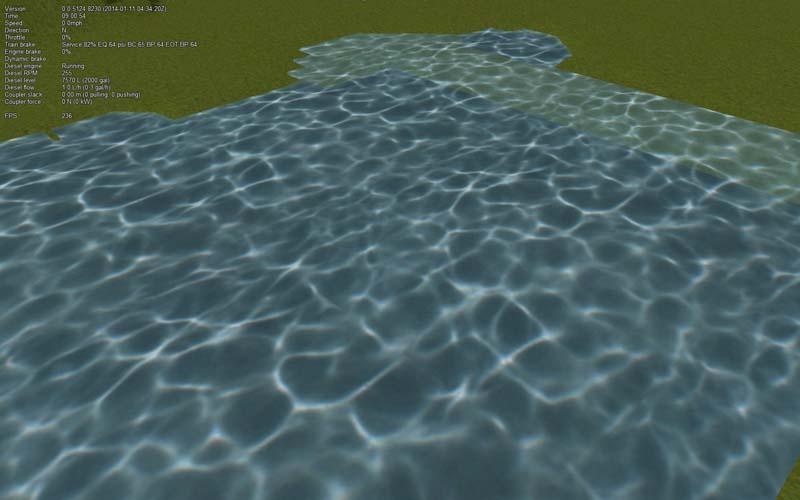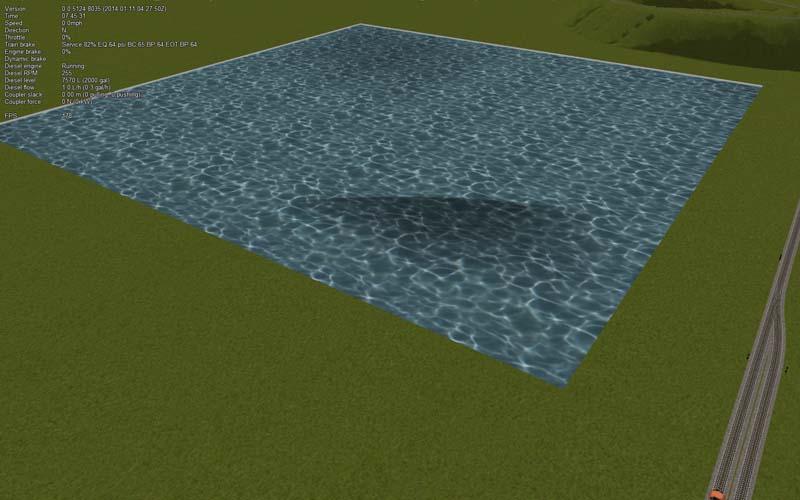On the microtex, since we already have it in the ground tiles, it shouldn't be hard to implement it in the water tiles, however, MSTS is set up to use the same water texture(s) for the entire route, so, we could start there. Dave, do you have a water microtex we could use?
I think using different textures for different patches would be a great idea, but definitely a post-1.0 OR RE type of addition.
Nicober, your information on the water tiling for MSTS is invaluable! We actually do read the water texture files out of the .env files now, so all I'll need to do is read the tile information as well, and simply add it to the code. Apparently, the default is 8x8 for each 1024 meter water tile, which makes sense, since the .ace file is 256 pixels. I'm not sure why it would be tiled differently, such as 2x8, but no matter, there's no reason not to do it the same way...
The water tiles are another thing Kuju seemed to have put an awful lot of effort into and then implemented very poorly. I'm beginning to believe the programmers and the guys who made the routes never had a conversation about what could be done.
Having said that, if you build a terrain lake, and say make the water layers very light at the top, and then the second one darker, and move the terrain below it, and then one even darker, and move the terrain below that layer, you'd be able to see the depth of the water at the slope of the lake bottom moving away from the shore. Here's a rather crude example that accidentally happened... Think about using, say 10 layers, what a subtle effect could be accomplished! The lighter color has terrain above the .05 meter level, and the darker is below the 1 meter level. Adding a few more layers would give you more of the color changes related to depth.

So, also, we're creating a completely flat plane using 256 vertices for absolutely no reason whatsoever, and then stretching a perfectly flat water texture across it. I want to change that to creating a 4 vertices rectangle, so we can use the CPU cycles for something else, perhaps an animation, or a really cool looking wave effect I found using a bumpmap. Of course, like MSTS, it would be one directional. For now. Of course, if we implemented Dave's idea of storing the data in a file for the textures in the future, it wouldn't be difficult to specify the direction of the water flow in the same files...
Robert


 Log In
Log In Register Now!
Register Now! Help
Help








